Benjamin Klein
Learning Query Expansion over the Nearest Neighbor Graph
Dec 05, 2021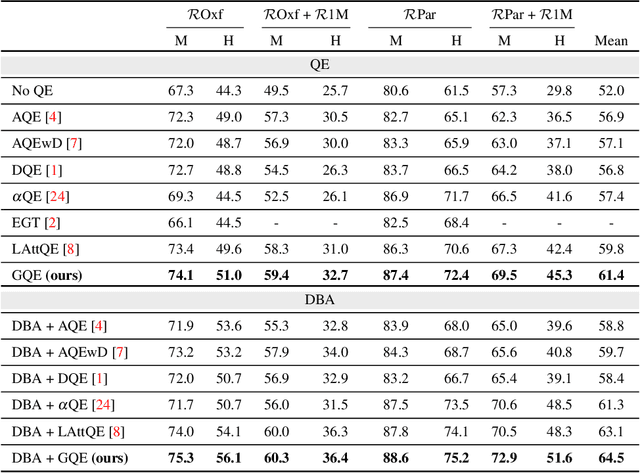
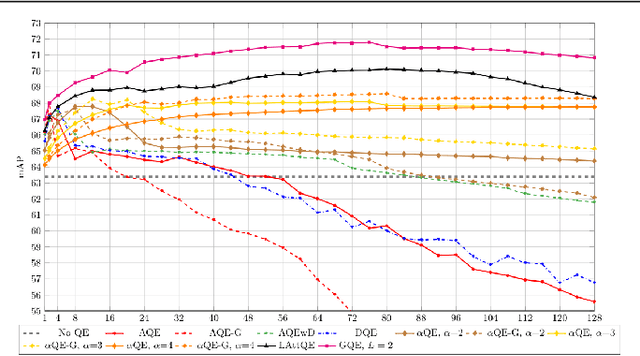

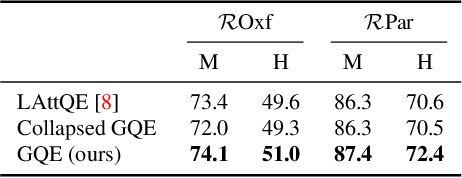
Abstract:Query Expansion (QE) is a well established method for improving retrieval metrics in image search applications. When using QE, the search is conducted on a new query vector, constructed using an aggregation function over the query and images from the database. Recent works gave rise to QE techniques in which the aggregation function is learned, whereas previous techniques were based on hand-crafted aggregation functions, e.g., taking the mean of the query's nearest neighbors. However, most QE methods have focused on aggregation functions that work directly over the query and its immediate nearest neighbors. In this work, a hierarchical model, Graph Query Expansion (GQE), is presented, which is learned in a supervised manner and performs aggregation over an extended neighborhood of the query, thus increasing the information used from the database when computing the query expansion, and using the structure of the nearest neighbors graph. The technique achieves state-of-the-art results over known benchmarks.
In Defense of Product Quantization
Nov 23, 2017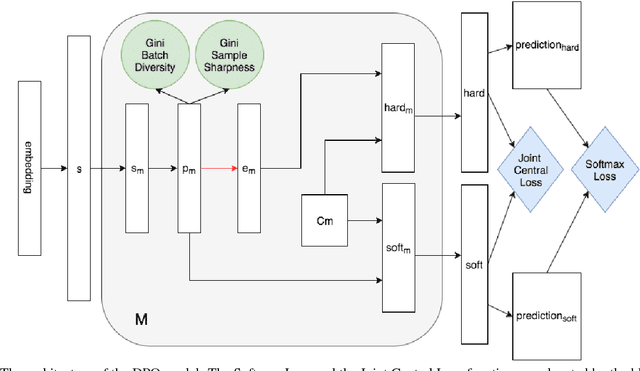
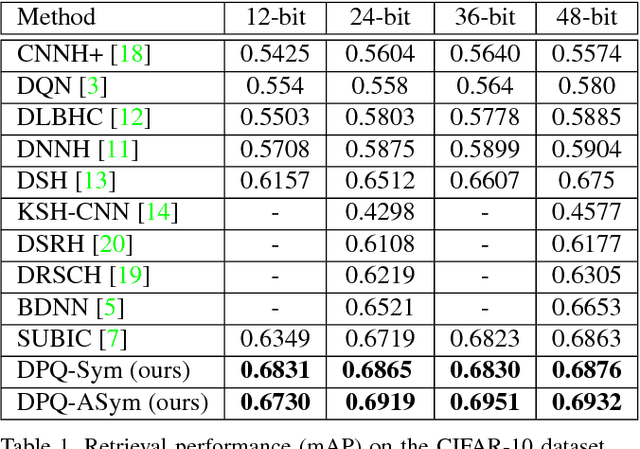
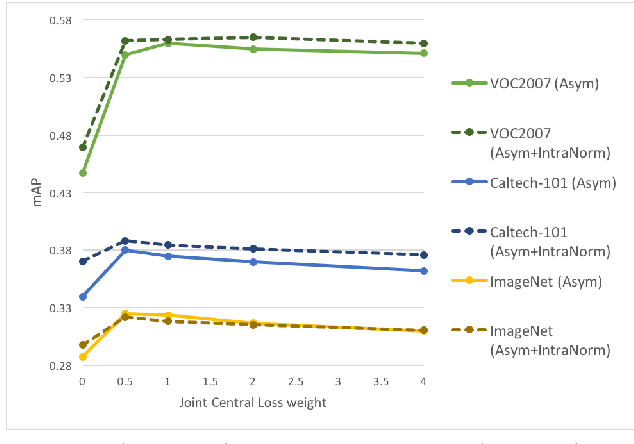
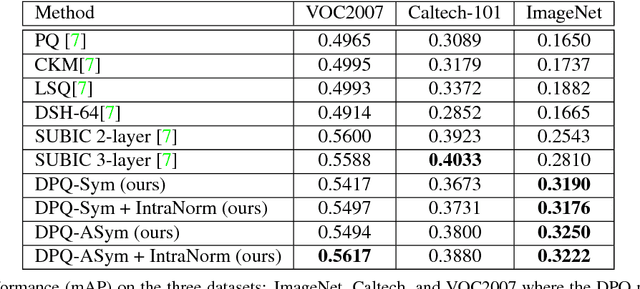
Abstract:Despite their widespread adoption, Product Quantization techniques were recently shown to be inferior to other hashing techniques. In this work, we present an improved Deep Product Quantization (DPQ) technique that leads to more accurate retrieval and classification than the latest state of the art methods, while having similar computational complexity and memory footprint as the Product Quantization method. To our knowledge, this is the first work to introduce a representation that is inspired by Product Quantization and which is learned end-to-end, and thus benefits from the supervised signal. DPQ explicitly learns soft and hard representations to enable an efficient and accurate asymmetric search, by using a straight-through estimator. A novel loss function, Joint Central Loss, is introduced, which both improves the retrieval performance, and decreases the discrepancy between the soft and the hard representations. Finally, by using a normalization technique, we improve the results for cross-domain category retrieval.
RNN Fisher Vectors for Action Recognition and Image Annotation
Dec 12, 2015
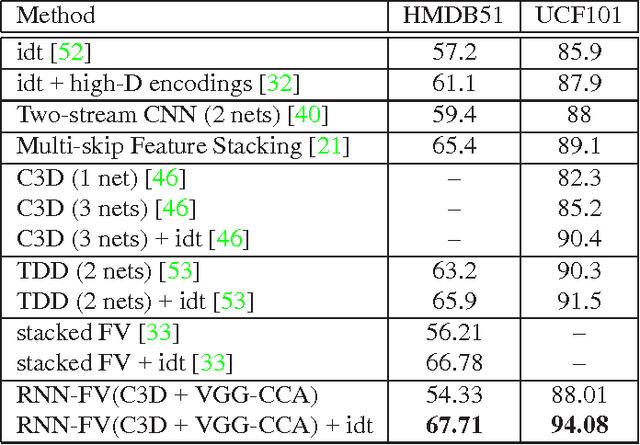
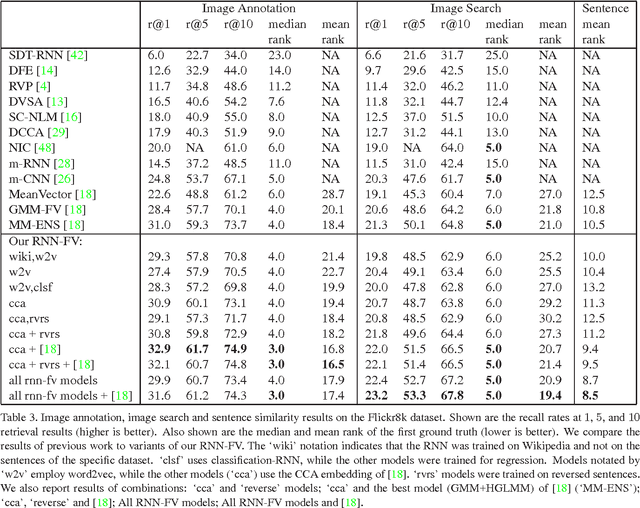
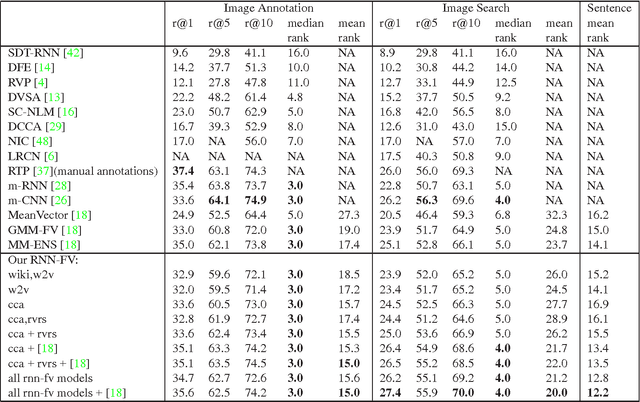
Abstract:Recurrent Neural Networks (RNNs) have had considerable success in classifying and predicting sequences. We demonstrate that RNNs can be effectively used in order to encode sequences and provide effective representations. The methodology we use is based on Fisher Vectors, where the RNNs are the generative probabilistic models and the partial derivatives are computed using backpropagation. State of the art results are obtained in two central but distant tasks, which both rely on sequences: video action recognition and image annotation. We also show a surprising transfer learning result from the task of image annotation to the task of video action recognition.
Fisher Vectors Derived from Hybrid Gaussian-Laplacian Mixture Models for Image Annotation
Jan 24, 2015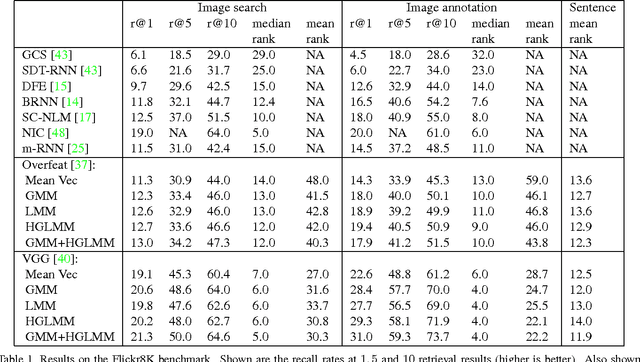
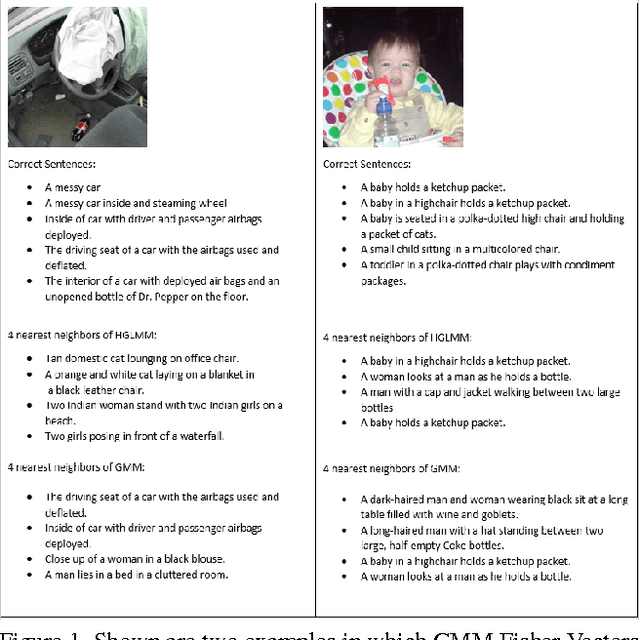
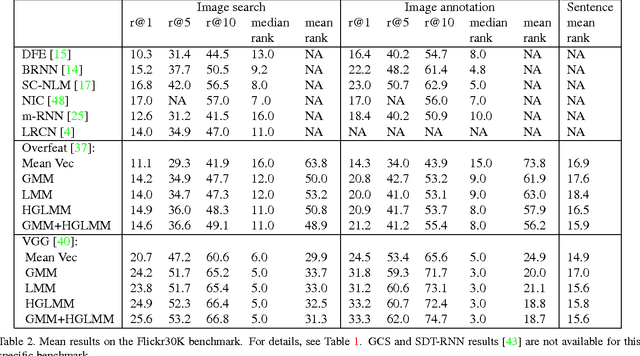
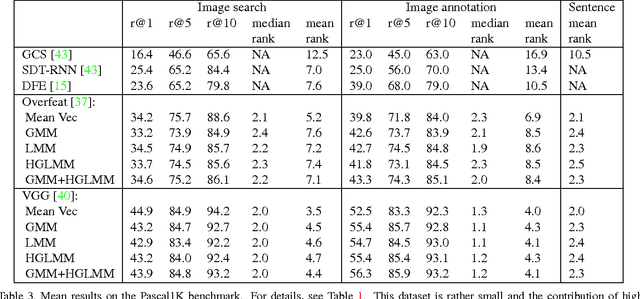
Abstract:In the traditional object recognition pipeline, descriptors are densely sampled over an image, pooled into a high dimensional non-linear representation and then passed to a classifier. In recent years, Fisher Vectors have proven empirically to be the leading representation for a large variety of applications. The Fisher Vector is typically taken as the gradients of the log-likelihood of descriptors, with respect to the parameters of a Gaussian Mixture Model (GMM). Motivated by the assumption that different distributions should be applied for different datasets, we present two other Mixture Models and derive their Expectation-Maximization and Fisher Vector expressions. The first is a Laplacian Mixture Model (LMM), which is based on the Laplacian distribution. The second Mixture Model presented is a Hybrid Gaussian-Laplacian Mixture Model (HGLMM) which is based on a weighted geometric mean of the Gaussian and Laplacian distribution. An interesting property of the Expectation-Maximization algorithm for the latter is that in the maximization step, each dimension in each component is chosen to be either a Gaussian or a Laplacian. Finally, by using the new Fisher Vectors derived from HGLMMs, we achieve state-of-the-art results for both the image annotation and the image search by a sentence tasks.
 Add to Chrome
Add to Chrome Add to Firefox
Add to Firefox Add to Edge
Add to Edge